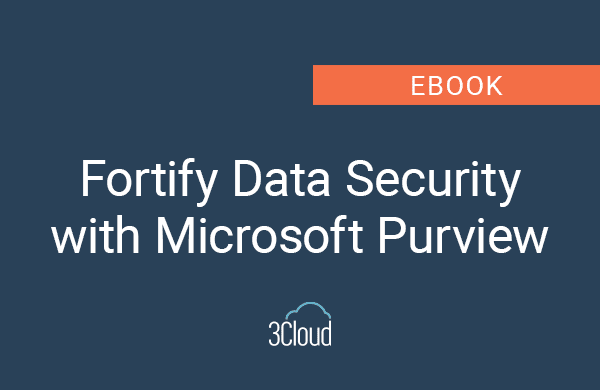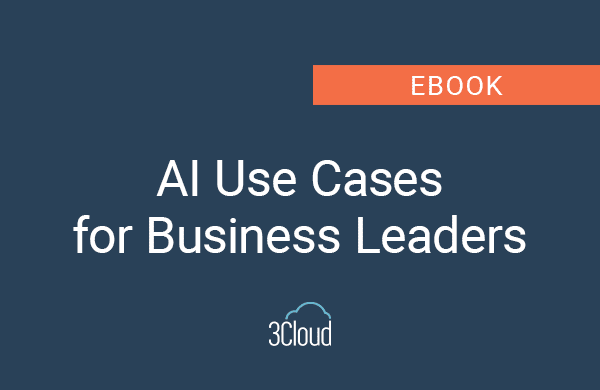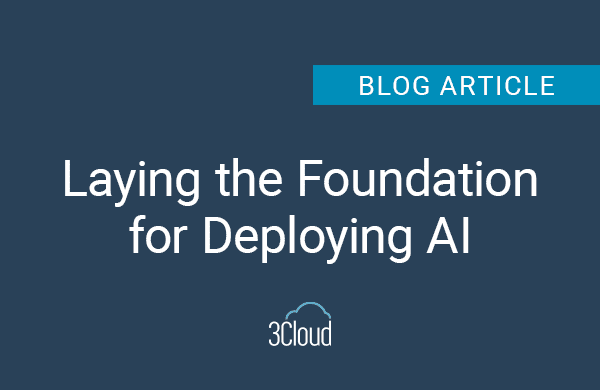Mastering your company’s data involves more than just collecting information, it requires a thoughtful combination of responsible data stewardship and strategic thinking about how to best leverage that data. At the heart of this endeavor is achieving a high level of data governance maturity. This structured method is key for organizations aiming to manage their data with accuracy and attention. Not only does it protect the integrity of the data, but it also enables confidence and thorough knowledge in navigating tasks, while ensuring adherence to critical regulations.
Microsoft Fabric’s all-in-one platform streamlines everything required to truly leverage data for insight and innovation, from data movement to data science, and real-time analytics to business intelligence, helping organizations build a rock-solid foundation for AI and ML capabilities and sustain business value. Data governance maturity is vital for Microsoft Fabric as it underpins the platform’s ability to deliver on its promise of enabling insight, innovation, and operational efficiency through streamlined data management and analytics capabilities, all while ensuring compliance and building trust.
Exploring the steps to elevate your organization’s data governance maturity, this blog post offers insights on creating a solid strategy to improve your data management. It’s about understanding where you stand and mapping out a plan to enhance your capabilities in handling data efficiently, ensuring compliance, and making better decisions.
Your Data Governance Maturity
Data stands at the heart of every modern organization. Data governance maturity denotes an organization’s skill in handling this vital resource, ensuring its protection and privacy while also making it a source of valuable insights.
3Cloud’s data governance methodology features five proven competencies or pillars that serve as the backbone of our framework. Broken down into key markers, these competencies allow organizations to streamline assessment and more effectively manage related implementations.
“Data enhances digital transformation. It must be governed and managed properly,” says Bill Martin, Data Strategist at 3Cloud. “For the customers that get it right, we see five areas that they prioritize in terms of their strategy: Identify your data. Provision your data. Store the data. Integrate the data. Govern the data. You need to put policies, reporting and compliance around what you’re doing with your data to ensure you’re following legal and geographic requirements, encryption and security. And you must keep all these pieces in mind when you’re thinking through your data strategy.”
Understanding Data Governance Maturity
Data governance maturity is a measure of an organization’s ability to manage and govern its data assets effectively. By assessing their data governance maturity level, organizations gain insights into their strengths, weaknesses, and areas for improvement.
In many organizations, adoption of a data-first mindset remains ongoing, often hindered through siloed or fractured data access and lack of knowledge or understanding of how to use tools that deliver insights or business intelligence. “Businesses or organizations without mature data governance policies in place should not be discouraged or dismiss Fabric’s potential,” says Steve Hughes, 3Cloud’s Senior Director of Data and Analytics.
Pillars of Data Governance Maturity
Creating a solid data governance strategy requires a foundation built on various elements. These fundamental pillars work together to help an organization see the full potential of their data assets. By understanding the significance of data privacy, data quality, metadata management, data and information architecture, and program management, businesses can establish a strong framework for a data governance approach.
3Cloud’s data governance assessment helps businesses and organizations understand where they should focus to establish or improve governance, identifies gaps or opportunities to enhance governance strategies and offers guidance for future planning.
Data Privacy
Data privacy is an important aspect of data governance maturity. This pillar focuses on consent management, data retention policies, access control audits, and compliance with privacy regulations such as GDPR and CCPA. Does your business have a data retention and disposition strategy in place?
Data Quality
Can most employees across your organization understand and communicate the value, use and meaning of data integrity? Quality data is critical for efficient business processes. Data quality looks into training programs for data management, backing for data verification efforts, standardization of data structures, and an organization’s grasp of the value and reliability of data. Our evaluation method reviews how well an organization follows data quality standards and pinpoints opportunities for improvement.
Metadata Management
Metadata is the basis for effective data governance. Metadata management evaluates an organization’s metadata policies, business definitions, data dictionaries, and the use of Data Asset Catalog tools. Success is measured in metadata management by evaluating factors such as metadata completeness, consistency, and accessibility. Has your organization established an inventory of systems and databases used?
Data and Information Architecture
Does your organization use business intelligence tools to analyze relevant data? Structured data and information systems are vital for streamlined data management. This area focuses on reviewing data management policies, staying current with data security measures, using data to boost operational effectiveness, and applying business intelligence tools. Evaluation of architectural maturity involves looking into data modeling, integrating processes, and governance practices.
Program Management
Is there company-wide understanding, and identification, of the data steward and data owner for different data assets? Effective program management is necessary for successful data governance initiatives. This pillar focuses on organization-wide data literacy, change management processes, and an understanding of data stewardship roles and responsibilities.
Interpreting Your Score: From Awareness to Leadership
Cultivating and encouraging broader data literacy will help organizations ensure all teams are primed to work in lockstep toward the objectives and goals they will ultimately leverage this data to achieve. Based on the assessment results, organizations are assigned a data governance maturity level ranging from Aware to Leader. Each level signifies specific capabilities and areas for improvement:
- Aware: Organizations at this level recognize the importance of data governance but lack formal processes and strategies.
- Reactive: These organizations have basic data governance practices in place but primarily react to issues as they arise.
- Proactive: At this level, organizations have established data governance processes and proactively address data management challenges.
- Champion: These organizations excel in data governance practices and effectively leverage data as a strategic asset.
- Leader: Organizations at the highest maturity level have fully integrated data governance into their core business operations and continuously improve their practices.
Activating Microsoft Fabric in Your Organization
Single-source-of-truth data access, comprehensive insights, centralized security and governance management, and faster decision-making top the list of Microsoft Fabric’s advantages. When making the case to deploy Fabric, those key points help everyone understand the platform’s potential to solve customers’, employees’, partners’ and suppliers’ unmet needs, and ease adoption down the road.
3Cloud’s experts are ready to help your teams leverage the experience we gained while working with Microsoft Fabric through its preliminary and preview stages. We can provide guidance on how to apply and work with Fabric every step of the way, and you may even qualify for Microsoft funding. Contact us today to get started.
How does data governance maturity impact AI/ML initiatives?
Data governance maturity plays a critical role in the success of AI/ML initiatives by ensuring the data used is of high quality, consistent, and reliable. A mature data governance framework establishes standards and policies for data collection, storage, and usage, which are essential for training accurate and effective AI models. With well-governed data, organizations can avoid common pitfalls such as biased data sets or incomplete data, which can lead to flawed AI predictions and decisions. Moreover, a solid data governance approach supports compliance with regulatory requirements, protecting the organization from potential legal and reputational risks associated with data misuse or privacy breaches in AI projects.
Advancing data governance maturity enhances an organization’s ability to leverage AI/ML for strategic advantage. It enables more sophisticated data analysis and insight generation, crucial for informed decision-making and innovation. High-quality, well-managed data feeds into AI/ML algorithms, resulting in more reliable and actionable outputs. This, in turn, accelerates the development of AI solutions that are closely aligned with business goals, driving operational efficiency, customer satisfaction, and competitive differentiation. Investing in data governance maturity is not just about managing data but also about enabling the potential of AI/ML technologies to be fully realized with an organization.
Conclusion
It is evident that advancing through the stages of data governance maturity is critical for organizations today. This journey not only improves data quality, security, and confidentiality but also lays the groundwork for leveraging advanced technologies like AI and ML effectively. As businesses progress in their data governance practices, they open doors to increased growth and operational efficiency. The journey toward data governance maturity transcends mere data management; it is about strategically elevating data that informs decisions, business innovation, and ensures long-term success. Prioritizing data governance maturity is indispensable for organizations that aspire to lead in their fields.
We encourage you to take the first step by assessing your organization’s data governance maturity or learn more in our Fabric eBook. Reach out to us today to get started.




